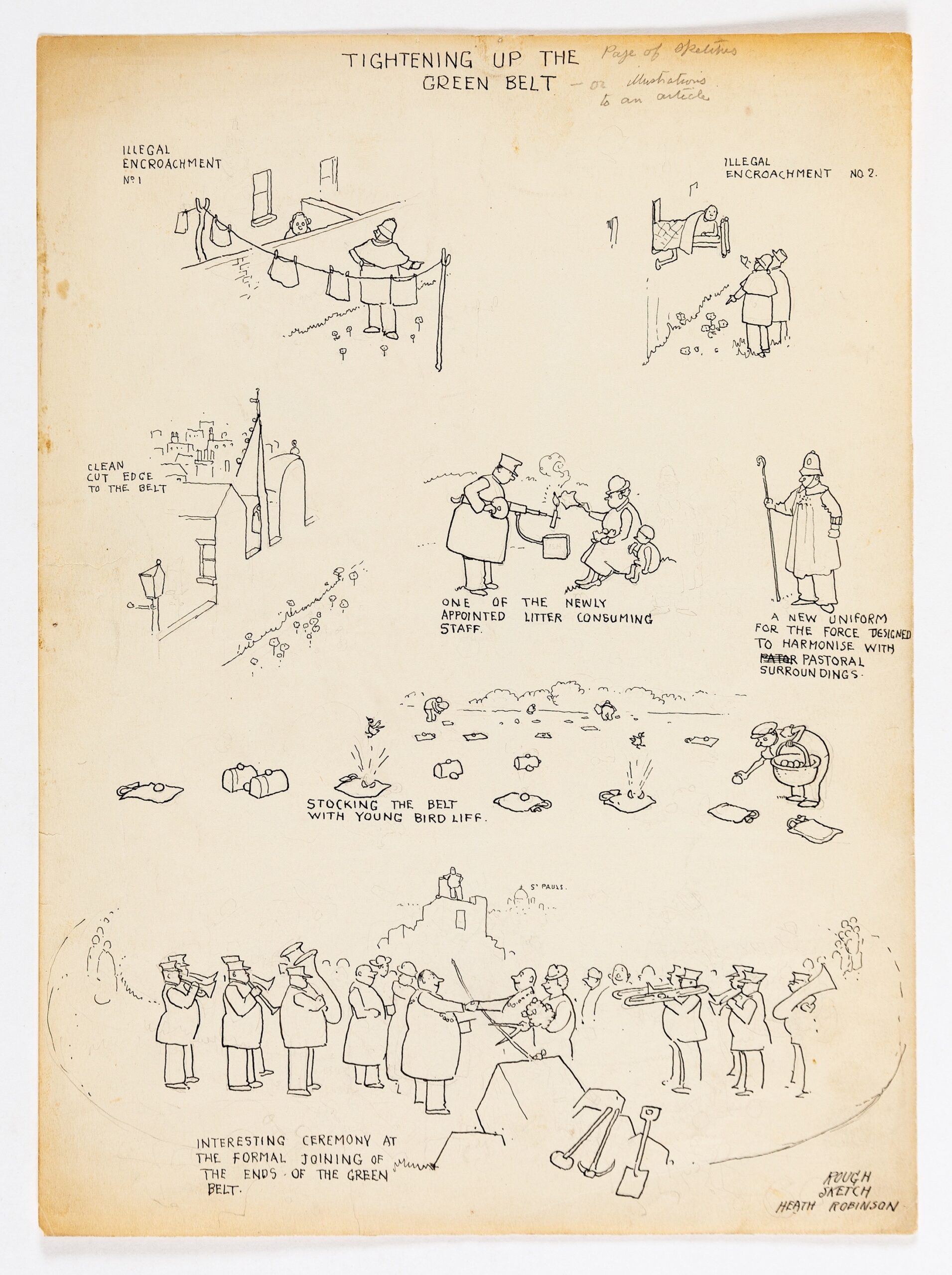William Heath Robinson ‘Tightening the Green Belt’
On 22 March 1921, The Times reported on ‘the urgent need of a green belt being preserved round London.’ It was the first recorded use of the phrase. By the time William Heath Robinson came to makes sketches for ‘Tightening the Green Belt’ (c.1935–47), the urban ring o’ roses was familiar enough to send up. Roofs, lampposts and steeples are neatly sliced in half so as not to encroach on an inch of green. A policeman inspects a washing line that has strayed beyond bounds, another burns a scrap of sandwich wrapper before it can litter the unspoilt country. Heath Robinson imagines a suitably pastoral costume for a country copper complete with shepherd’s crook and peasant’s smock. The British Bobby styled by Claude Lorrain.

These aren’t strictly architectural drawings. We barely see the buildings. The dome of St. Paul’s is only a thimble on the horizon of a ribbon-cutting ceremony joining two green fields together. Heath Robinson’s sketches are a tease on fears that the green band around cities was less an inviolable chastity belt, more a garter made of gauze: the only thing standing between the rapacious town and the virgin turf. Heath Robinson draws quirks, not quoins, manners, not mullions. Faithful draughtsmanship is not the aim. ‘ROUGH SKETCH’ the cartoonist has written in the bottom-right corner. The joke’s the thing.
Heath Robinson was an urban refugee returned to town. Born in 1872 at 25 Ennis Road, north London, south of Stroud Green and west of Finsbury Park, he fled by increments. From the Holloway Road to Hatch End, Pinner, from Pinner to Cranleigh in Surrey, where for the next ten years he became a confirmed ‘villager’. He returned to London in his late fifties, settling, with a heart too weak to walk or garden, at Shepherd’s Walk in proverbially leafy Highgate. He knew the terraces and the suburbs, the sleepy village and the rus in urbe. He had lived on either side of the border, and on top of it, too, and knew as he drew how much his audience cared about every last patch of England’s green and pleasant land.
Laura Freeman is writing a biography Ways of Life: Jim Ede and the Kettle’s Yard Artists to be published by Jonathan Cape.
This text was entered into the 2020 Drawing Matter Writing Prize. Click here to read the winning texts and more writing that was particularly enjoyed by the prize judges.

– Philippa Lewis